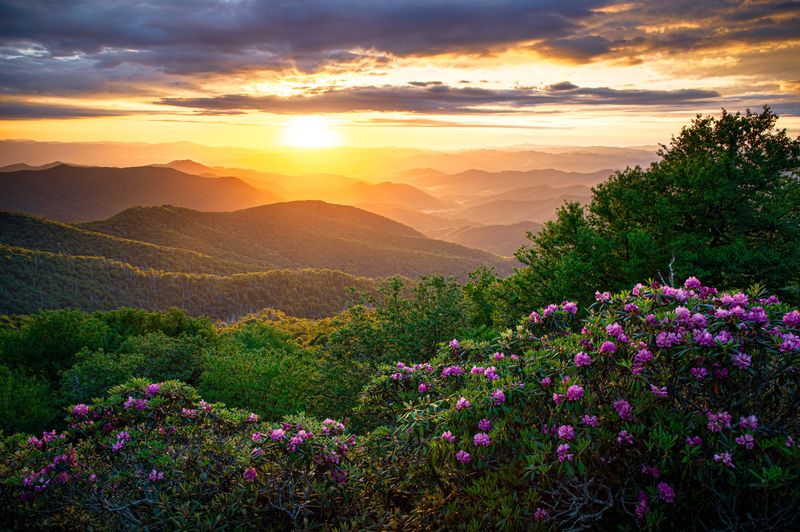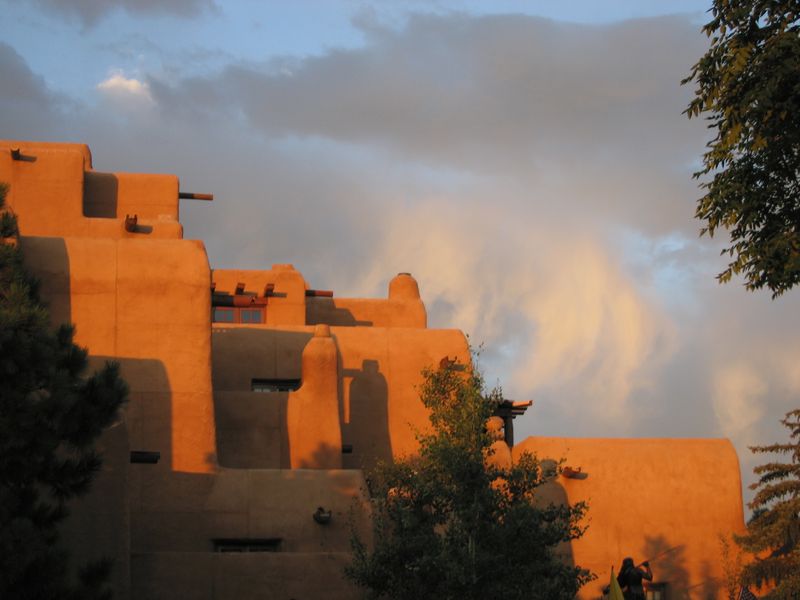Americans are falling in love with smaller destinations that pack big experiences. The latest travel trend shows people trading crowded cities for charming towns with unique character and slower pace. Asheville, North Carolina and Santa Fe, New Mexico have emerged as the stars of this movement, offering the perfect blend of culture, nature, and authentic local experiences that travelers crave.
Mountain Magic: Asheville’s Creative Soul Captivates Visitors

Nestled in the embrace of the Blue Ridge Mountains, Asheville has transformed from a sleepy mountain town into a cultural powerhouse that draws visitors from across America. The city’s downtown hums with energy as musicians perform on street corners and artists display their creations in the renowned River Arts District. Unlike major tourist destinations where you’re just another face in the crowd, Asheville welcomes you like an old friend who can’t wait to share their favorite local spots.
Breweries have become the unofficial community centers of this mountain gem. With more craft breweries per capita than any other U.S. city, Asheville’s beer scene offers everything from innovative IPAs to traditional German lagers. Wicked Weed Brewing and Highland Brewing Company anchor a scene where master brewers experiment with local ingredients, creating flavors you simply won’t find anywhere else.
The culinary landscape matches the beer in both quality and creativity. Farm-to-table isn’t just a marketing phrase here—it’s a way of life. Chefs maintain close relationships with local farmers, foragers, and food artisans, ensuring ingredients travel minimal distances before reaching your plate. Restaurants like Cúrate and Benne on Eagle showcase Appalachian ingredients with global techniques, creating unforgettable dining experiences that tell the story of the region.
Nature beckons just beyond the city limits, offering a perfect counterbalance to the urban experiences. The Blue Ridge Parkway, often called America’s favorite drive, winds through mountains draped in morning mist, providing easy access to countless hiking trails. During autumn, the hillsides erupt in a symphony of red, orange, and gold, drawing leaf-peepers from around the world who fill the winding roads to witness nature’s color show.
The Biltmore Estate stands as a testament to America’s Gilded Age, drawing history buffs and architecture enthusiasts alike. This 250-room château, built by George Vanderbilt in the late 1800s, offers a glimpse into a bygone era of American wealth and ambition. The estate’s gardens, designed by landscape architect Frederick Law Olmsted, showcase meticulously maintained formal gardens alongside wilder, more natural areas that change with the seasons.
Accommodation options reflect Asheville’s eclectic personality. Boutique hotels like The Foundry and Kimpton Hotel Arras occupy lovingly restored historic buildings. For a more intimate experience, dozens of bed and breakfasts occupy Victorian homes in historic neighborhoods, where innkeepers share insider tips over homemade breakfast. Those seeking wellness retreats find sanctuary at properties like Shoji Spa, where private outdoor hot tubs overlook mountain vistas.
What truly sets Asheville apart is its genuine, unpretentious character. Despite growing national attention, the city maintains its quirky soul and warm hospitality. Street performers entertain crowds on Pack Square, independent bookstores host readings by local authors, and coffee shops become impromptu meeting places where visitors and locals share recommendations. This authentic atmosphere explains why so many visitors return year after year—or even decide to move permanently to this mountain haven.
The city’s calendar brims with festivals celebrating everything from electronic music to traditional Appalachian crafts. The LEAF Festival brings world music to nearby Lake Eden, while the Sourwood Festival honors the region’s distinctive honey. These events provide perfect timing hooks for visitors planning their Asheville adventures, offering deeper immersion into the local culture and community spirit that defines this special place.
Desert Jewel: Santa Fe’s Timeless Appeal Blends Cultures and Landscapes

Santa Fe radiates a golden glow that captivates visitors from their first glimpse of the city’s distinctive adobe architecture. Founded in 1610, this high-desert gem holds the title of America’s oldest state capital, where centuries of Native American, Spanish, and Anglo influences have created a cultural tapestry unlike anywhere else in the country. Walking through the historic Plaza feels like stepping through different eras simultaneously, with the 400-year-old Palace of the Governors standing as the nation’s oldest continuously occupied public building.
Art flows through Santa Fe’s veins like lifeblood. Canyon Road, a half-mile stretch packed with over 100 galleries, showcases everything from traditional Southwestern paintings to cutting-edge contemporary installations. The city’s museums rival those of metropolitan areas many times its size. Georgia O’Keeffe Museum celebrates the iconic artist who found her muse in New Mexico’s dramatic landscapes, while SITE Santa Fe pushes boundaries with provocative contemporary exhibitions that would feel at home in New York or Los Angeles.
Meow Wolf’s House of Eternal Return exemplifies Santa Fe’s blend of tradition and innovation. This immersive art experience invites visitors to explore a Victorian house with portals to fantastical dimensions, created by a collective of local artists with support from Game of Thrones author George R.R. Martin, a longtime Santa Fe resident. The installation has become a cultural phenomenon, drawing younger visitors to a city once perceived as catering primarily to retirees and art collectors.
Culinary traditions spanning centuries come alive in Santa Fe’s restaurants. Chile—both red and green—features prominently on menus across town, with locals proudly debating which variety reigns supreme. The official state question, “Red or green?” often greets diners, though connoisseurs know to answer “Christmas” to receive both. Historic establishments like The Shed and modern interpretations at Sazon showcase New Mexican cuisine’s distinctive flavors, where Native American, Spanish colonial, and Mexican influences merge into something entirely unique.
The landscape surrounding Santa Fe provides endless opportunities for outdoor adventure. Sitting at 7,000 feet above sea level, the city enjoys four distinct seasons with over 300 days of sunshine annually. Nearby mountains offer hiking and mountain biking in summer, while winter brings skiing at Ski Santa Fe, just 16 miles from downtown. Desert trails wind through piñon and juniper forests, revealing vistas that have inspired artists for generations.
Accommodation options reflect Santa Fe’s distinctive character and history. Historic hotels like La Fonda on the Plaza occupy buildings dating back centuries, while luxury resorts like Four Seasons Resort Rancho Encantado offer serene retreats in the foothills. Smaller inns and bed and breakfasts provide intimate experiences, often in historic adobe structures with traditional kiva fireplaces and hand-carved wooden furniture that showcase the region’s craftsmanship.
Santa Fe’s calendar overflows with cultural celebrations that honor its diverse heritage. The Santa Fe Indian Market, held annually since 1922, brings together over 1,000 indigenous artists from across North America, while the Santa Fe Opera’s summer season attracts aficionados to its stunning open-air theater. The burning of Zozobra, a 50-foot puppet representing gloom, kicks off Fiestas de Santa Fe each September, a tradition dating back to the 1920s that symbolizes the release of worries and hardships.
Perhaps most compelling is Santa Fe’s quality of light—a crystalline clarity that has drawn photographers and painters for generations. The interplay of this remarkable light with adobe buildings creates a warm glow at sunset that locals call “the golden hour,” when the entire city seems bathed in amber. This magical atmosphere, combined with the city’s walkable scale and welcoming spirit, creates an immersive experience that stays with visitors long after they’ve returned home, often drawing them back to this desert jewel year after year.



